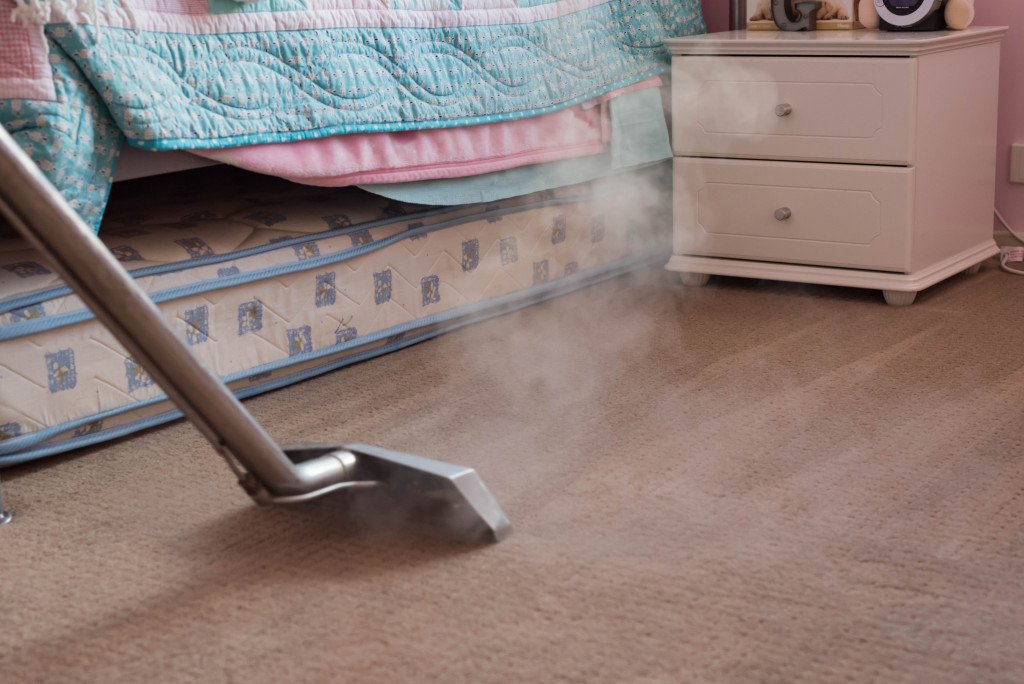Just as we care about the food we put in our body, so too should be mindful of the items surrounding us in our homes.
As of date, there are over 80,000 chemicals in the market, mostly not regulated. Most of these chemicals can be found in the typical items found in our houses. These include our cookware, body products, clothing, cosmetics, and cleaning products.
Why Make Homes Toxin-free
The number one reason we should make our homes toxin-free is to keep ourselves and our families healthy. Although people can have different reactions when using chemical-based products, the bottom line is, toxins can damage our bodies.
Toxins can damage the enzymes in our bodies. The physiological processes in our bodies rely on enzymes. When we breathe, eat, walk, think — everything that we do, we need enzymes to do the job.
With toxic chemicals in the picture, the countless bodily functions that we do are undermined. For instance, toxins can inhibit the production of hemoglobin in our bodies. It can also slow down the body’s ability to fight off free radicals that accelerate aging.
As toxins accumulate inside our bodies, it becomes difficult for us to detoxify. Thus, before it is too late, let us identify ways to make our homes free from toxins.
Creating a Home Free of Toxins
1. Improve Indoor Air Quality
Improving indoor air quality is number one on the list in making your home toxin-free. Construction materials, candles, cooking, and cleaning products are some of the contributing factors to indoor air pollution.
Nonetheless, there are plenty of ways to improve the air quality inside your house. For one, during sunny weather, open up your windows to allow fresh air to circulate within your home. Another way to purify the indoor air is to use diffusers, air purifiers, and salt lamps.
Avoid synthetic fragrance and air fresheners. Accordingly, air fresheners contain over 100 different chemicals, including VOCs (volatile organic compounds). Opt for national options such as essential oils and soy or beeswax candles.
Take note as well of naturally occurring gases outside that might enter your homes. Consider installing a radon mitigation system at home as this gas is a health hazard to you and your family.

2. Reconsider Your Cookware
Toxins could also be lurking on the cookware that you use at home. Cookware may seem innocent in a world filled with toxins and harmful chemicals, but do not be complacent. There are cookware materials that leach chemicals that go into the food you are cooking.
You should avoid some of these cookware materials: Teflon, aluminum, copper, lead, and BPA. Switch instead to cast iron, ceramic coated pots and pans, and stainless steel.
3. Reduce Plastic Use
These days, it is so easy to get hold of plastic food containers. They are cheap and comes in fun shapes, sizes, and colors. However, plastic food storage containers have harmful chemicals such as Bisphenol A Plastic (BPA), Bisphenol S Plastic (BPS), and Phthalates.
When we put hot food directly into these plastic containers or heat our food using them, we allow the plastic toxins to be absorbed by our food.
Rather than taking chances and doing harm to ourselves and our families, let us switch to glass containers when serving hot food or reheating. There are plenty of affordable options in the market available.
4. Switch to Organic, Harmless Cleaning Supplies
When it comes to cleaning products, most of us have become loyal to brands we have seen on commercials or were used by our families growing up. However, we need to reconsider the items we use in cleaning our homes.
Of the thousand chemicals available in cleaning products, only about 200 of them have passed government standards and are regulated. In fact, the chemical safety law of the country has not been updated since the 70s.
Rather than risking the lives of your family members, switch to organic and non-toxic cleaning options. You can even consider making a cleaning product. All you need is a spray bottle, hot water, white vinegar, and liquid soap.
5. Clean Regularly
Last but not least, never underestimate the value of regular cleaning. Indoor dust contains toxins from the various products found in your home. No matter how careful you are with food choices, cookware, cleaning supplies, and even furniture pieces, nothing could substitute for a clean and tidy home.
Schedule a weekly cleaning activity. Wipe the surfaces of your interior with a damp cloth, vacuum and mop the floors, practice a no-shoes policy, and always place a doormat near the doors.
Consider doing a regular inspection of your home’s structure. Look for signs of molding, chipped and cracked walls, exposed floorboards. Doing all of these adds to the assurance that you and your family maintain a toxin-free home.
Achieving a toxin-free home is within everyone’s reach. By educating ourselves and practicing these helpful pointers, we can ensure the health and safety of everyone.

